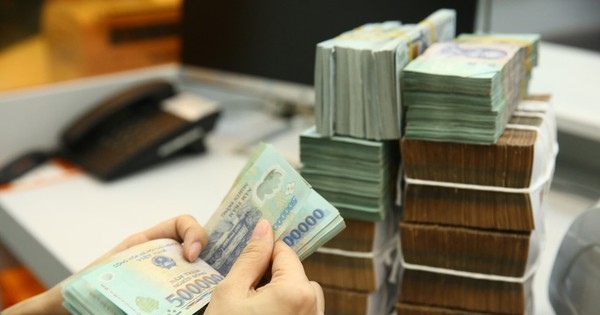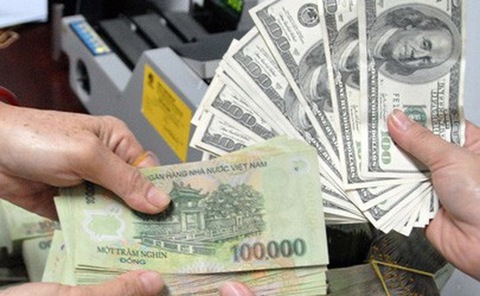Roadmap needed to remove credit room
Roadmap needed to remove credit room
Central banks of countries such as Japan, China, Australia, Croatia and the Nordic countries have granted credit lines to their banks. However, as the banking system developed, this mechanism was dismantled.
Illustrative photo. |
Speaking with Saigon Investment about the credit room, Dr. HỒ QUỐC TUẤN, University of Bristol, U.K., said that the world has seen several periods of crisis as currently present today. The general lesson that can be learnt when using credit lines is that many loans will turn into non-bank loans, so it is more difficult to control. When borrowing from banks, there are rules on capital adequacy besides many other regulations. When using the credit tool, the purpose to be achieved is not clear and it is not easy to set specific limits.
JOURNALIST: - Sir, what do you think about the State Bankof Vietnam's opinion that if Vietnam removes the credit limit,thenbanks will race to credit markets, which will then lead to an increase in interest rates to mobilize and lend, thereby affecting the macrocurrency?
Dr. HỒ QUỐC TUẤN: - This is not true at all. Because when the Covid-19 pandemic occurred, or even before the pandemic, central banks were not naive to think that simply applying Basel standards to the banking system they could control everything.
Therefore, they combined common management standards with a stress test. When they saw the risks in the economy and did not want credit to increase too sharply, or when they wanted to control inflation to the desired level, they put these cases in the stress test tool and gave the bank capital adequacy level. This tool itself will calculate a hidden credit line on a more quantitative, objective, transparent and marketable basis. This is to say that the central bank does not have to provide an administrative credit limit, but a scenario which contains an assumption about the credit growth rate.
For instance, if the central bank wants credit growth at 14% to control inflation, it will bring this limit into the stress test tool and signal to the market about growth indicators. With such a stress test, if banks fail to achieve capital adequacy ratio, banks are required to increase capital or stop lending. When applied like this initially, commercial banks can offer a very high credit growth plan for themselves, but after a few times of running stress tests, they will understand that they cannot increase as high as desired because they will hit the stress test wall and will have to adjust the business plan accordingly.
By doing so, the State Bank of Vietnam will not need to raise administrative issues to create a request mechanism. Commercial banks themselves will gradually get used to planning ahead, because as mentioned, they will see that if credit growth is too fast it will hit the stress test wall. At the same time, the bank will take the initiative for planning, instead of just lending and then waiting for the State Bank of Vietnam to remove it, like waiting for the current credit limit. To make it easy to understand, just imagine that on a moving highway you cannot simply hit an obstacle and hope that the car will not run. We need to adjust the coefficient so that the running speed is controlled.
- Sir, if the stress test is applied, how will small-scale commercial banks be affected?
- The current way of granting credit limits is to divide the cake equally so small banks still have a credit limit to operate. For instance, banks in good health are granted a credit limit of 14%, and banks with poor health also receive 5% to 7%.
When running stress tests, small banks may not meet their targets and cannot increase credit or may even have to reduce their asset size. But this is something we have to accept because the allocation of capital in the economy is extremely important. One bank can have a credit growth of up to 20% but not be granted a sufficient limit, while another bank that cannot grow credit is still granted a credit limit, i.e., inefficient capital allocation. Weak banks are still weak because they can still have credit growth limits.
In my opinion, removing the credit limit is necessary, but not immediately, and should be placed on a roadmap. For instance, the State Bank of Vietnam announced that within five years it will remove the credit limit. During these five years, the State Bank of Vietnam will tell commercial banks how to do a stress test and solve the bank weaknesses, and deal with weak banks as well, with regulations on checking data and responsibilities. If there is no specific schedule set, no one will do it.
|
Dr. Trần Du Lịch, economic expert: Previously, the mechanism for granting credit lines to commercial banks was expected to be implemented for a short time. However, there are many incidents that can stretch administrative management and maintenance for too long. Currently, the State Bank of Vietnam is on a roadmap to reduce the ratio of short-term capital for medium and long-term loans. This is what needs to be done to ensure safety and gradually reduce the burden of medium and long-term capital of commercial banks, of which corporate bonds are one channel. If the commercial banks still allow short, medium, and long-term capital, it means that the banks will continue to run after credit and raise further risks. |
|
Dr. Cấn Văn Lực, member of the National Financial and Monetary Policy Advisory Council: The State Bank of Vietnam needs to remove the mechanism of granting credit room and managing credit growth through the Capital Adequacy Ratio (CAR) of banks. This credit limit granting mechanism should only be a temporary solution for the next one or two years. So that banks do not have to interrupt their business operations during the temporary use period, the State Bank of Vietnam must consider granting a monthly limit or open an additional limit instead of consolidating a batch and then granting more room. |























